
1. Consider warranties. Investigate the warranties for every boat you are considering. Warranties are valuable, and should be an influencer in your decision. Some warranties are transferable, which may become a selling point if you decide to sell your boat. Find out what the warranty includes (engine, hull, components, accessories, service, etc.) and find out about the service that you will receive if something fails. A good way to do this is to ask for references. If you are considering buying a pre-owned boat, be sure to get a marine survey – hire this person yourself to ensure that the survey is done with your interests in mind.
2. Keep a log. At the boat show and as you visit local dealerships, document everything: Take pictures of the dashboard, the galley, the head. Take notes, or record your reactions on a recording device. Involve your family with the decision and listen to their likes and dislikes about each boat. No two boats are exactly the same – but there exists a perfect boat for you and yours. Use your short list of features and brands to quantify your observations… Make a chart, and use it to rank your top choices.
3. When are you ready? Reminder: There is no correct amount of time that it should take to shop for a boat. For some, one afternoon is all that they need. It takes others several years. The right time for you to buy a boat is when you are ready. Boat shows often offer “show specials” to entice you to purchase at the show. Ask the dealer if he/she would honor that price in a few weeks after doing some more shopping… Chances are the answer will be yes.
4. The Test Drive. Did you realize that you can test drive a boat? The way a boat handles, and the way it feels on the water is a very important consideration. Bring the family along for your test drives, and try to test the boat in the types of conditions where you will be using it.
5. The cost of ownership. For most, the cost of owning a boat is nothing compared to the benefits derived from owning and using your own boat. Nonetheless, be sure you understand that the cost of owning a boat includes more than just the fiberglass. You’ll have to spend money on maintenance essentials like outboard motor oil as well.
6. Learning to use your new boat. Boating is not difficult, but driving a boat, like anything else, is a skill. If you have not already, sign up for boaters education courses where you can learn the rules of the road. For on-the-water training, some dealers provide captains to train you on how to use your boats. Others leave it up to you to learn. Most marinas and dealerships have a network of captains or experienced boaters that you can hire to show you the ropes on your own boat. Most likely the only parts that will require practice will be docking, launching and retrieving your boat. The best tip here is just to take it slow and practice.
Did you like this? Share it:
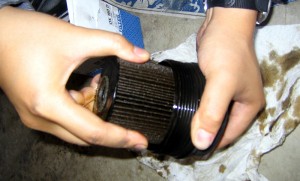 In an early post in this series I said to drain all of the fuel from the tank. This is a necessary procedure, but there are two schools of thought when it comes to what to do after this process. Some manufacturers say to disconnect the fuel hose and run the engine until all of the fuel is gone and leave the boat in that condition for storage. Others say to refill the tank with fuel and add a fuel treatment product to prevent condensation from building in the tank.
In an early post in this series I said to drain all of the fuel from the tank. This is a necessary procedure, but there are two schools of thought when it comes to what to do after this process. Some manufacturers say to disconnect the fuel hose and run the engine until all of the fuel is gone and leave the boat in that condition for storage. Others say to refill the tank with fuel and add a fuel treatment product to prevent condensation from building in the tank.

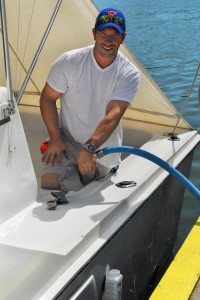
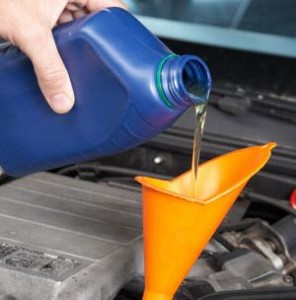
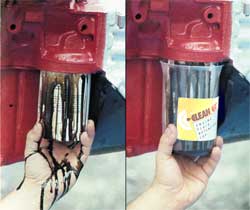
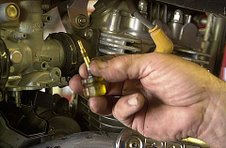

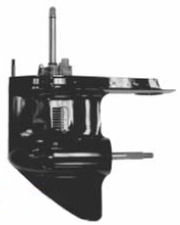 A sterndrive, or stern drive, is a form of boat propulsion also known as inboard/outboard or I/O. The upper unit engine is located inboard, just forward of the boat stern, producing power by way of a shaft that goes through the stern to the lower drive unit (also known as the outdrive) located outside the hull, which resembles the bottom half of an outboard. The lower drive unit carries the boat propeller and contains gearing for the engine system. This unit controls the steering of the boat, as with an outboard motor. No rudder is necessary. The sterndrive engine itself is usually the same as those used in true inboard systems. The most popular sterndrive engines have historically been Chevrolet and Ford V-8 car engines that have been adapted for marine use. The most popular brand of sterndrive is Mercruiser by Mercury Marine, who also manufactures outboard motors and
A sterndrive, or stern drive, is a form of boat propulsion also known as inboard/outboard or I/O. The upper unit engine is located inboard, just forward of the boat stern, producing power by way of a shaft that goes through the stern to the lower drive unit (also known as the outdrive) located outside the hull, which resembles the bottom half of an outboard. The lower drive unit carries the boat propeller and contains gearing for the engine system. This unit controls the steering of the boat, as with an outboard motor. No rudder is necessary. The sterndrive engine itself is usually the same as those used in true inboard systems. The most popular sterndrive engines have historically been Chevrolet and Ford V-8 car engines that have been adapted for marine use. The most popular brand of sterndrive is Mercruiser by Mercury Marine, who also manufactures outboard motors and  As reported today by the Associated Press, oil prices have dropped below $117 a barrel on the strength of the American dollar. According to the article, “The U.S. Energy Department’s Energy Information Administration reported Wednesday that crude stockpiles grew 2.4 million barrels last week”
As reported today by the Associated Press, oil prices have dropped below $117 a barrel on the strength of the American dollar. According to the article, “The U.S. Energy Department’s Energy Information Administration reported Wednesday that crude stockpiles grew 2.4 million barrels last week”